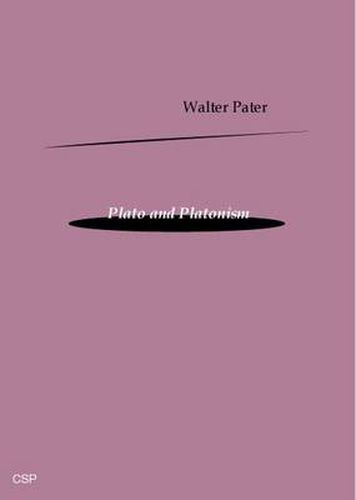Readings Newsletter
Become a Readings Member to make your shopping experience even easier.
Sign in or sign up for free!
You’re not far away from qualifying for FREE standard shipping within Australia
You’ve qualified for FREE standard shipping within Australia
The cart is loading…






Walter Pater was destined to join the clergy after meeting John Keble in 1855. After reading Ruskin’s Modern Painters his interest in the aesthetic was kindled and he eventually tutored Oscar Wilde. His book on Plato and Plato’s philosophy was published in 1893 a year before he died. By Platonism, the author clarifies, is meant not Neo-Platonism of any kind, but the leading principles of Plato’s doctrine, which I have tried to see in close connexion with himself as he is presented in his own writings. The critique here presented of Plato’s work enables Pater to study the close relation between author and text. It covers a diversity of areas and Pater is able to give each area enough attention to make it self-sufficient (each chapter was originally a lecture), yet at the same time, he succeeds in unifying all the areas. Chapters explore the relationship between Plato and Socrates; Plato’s aesthetics; Plato’s Republic; and the relationship between Plato and the Sophists.
$9.00 standard shipping within Australia
FREE standard shipping within Australia for orders over $100.00
Express & International shipping calculated at checkout
Walter Pater was destined to join the clergy after meeting John Keble in 1855. After reading Ruskin’s Modern Painters his interest in the aesthetic was kindled and he eventually tutored Oscar Wilde. His book on Plato and Plato’s philosophy was published in 1893 a year before he died. By Platonism, the author clarifies, is meant not Neo-Platonism of any kind, but the leading principles of Plato’s doctrine, which I have tried to see in close connexion with himself as he is presented in his own writings. The critique here presented of Plato’s work enables Pater to study the close relation between author and text. It covers a diversity of areas and Pater is able to give each area enough attention to make it self-sufficient (each chapter was originally a lecture), yet at the same time, he succeeds in unifying all the areas. Chapters explore the relationship between Plato and Socrates; Plato’s aesthetics; Plato’s Republic; and the relationship between Plato and the Sophists.